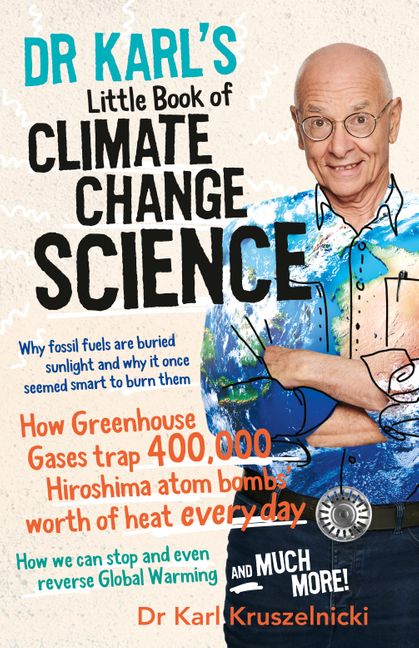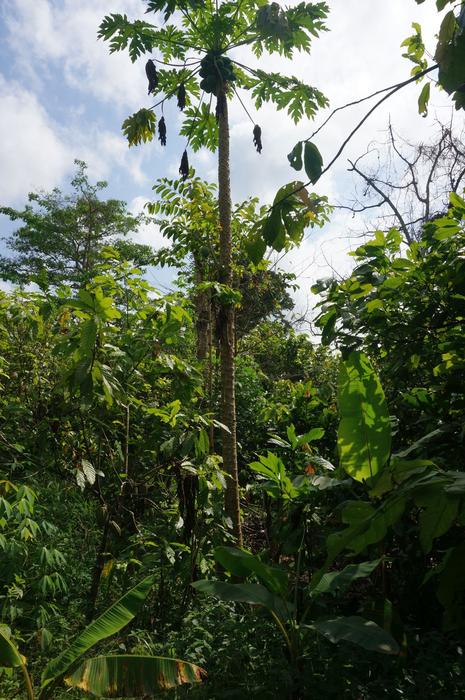Climate change driving global surge in world’s worst wildfires – cosmosmagazine.com

Report on the Escalating Global Wildfire Crisis and its Impact on Sustainable Development Goals
1.0 Introduction
A recent study analyzing over four decades of global data reveals a significant increase in the frequency and severity of catastrophic wildfires. These events pose a direct threat to the achievement of multiple Sustainable Development Goals (SDGs), particularly those related to climate, life on land, and community resilience. This report summarizes the key findings and outlines the implications for global sustainability targets.
2.0 Key Findings on Wildfire Trends
The analysis of global reinsurance data and international disaster reports from 1980 onwards highlights a dramatic escalation in the socioeconomic impact of wildfires.
- Since 1980, the number of fatal wildfires causing 10 or more deaths has tripled.
- The economic damage from these events has increased more than fourfold over the same period.
- A significant concentration of damage has occurred recently, with 43% of the world’s costliest fires and half of all billion-dollar fire events striking in the past decade alone.
3.0 Causal Factors and Links to SDG 13: Climate Action
The study establishes a clear connection between the rise in catastrophic wildfires and climate change, directly challenging the progress of SDG 13 (Climate Action).
- Half of the disasters analyzed occurred during the most extreme weather conditions on record for their respective locations.
- Atmospheric dryness, a key driver of fire intensity, has increased by 2.4 times since 1980.
- The occurrence of severe drought conditions has increased by 3.4 times in the same period.
These findings indicate that climate change is creating fundamentally more dangerous fire conditions, making wildfires more difficult to control and more destructive.
4.0 Disproportionate Impacts on Ecosystems and Communities
The impact of these fires is not evenly distributed, with specific regions and biomes facing acute risks. This threatens progress on SDG 15 (Life on Land) and SDG 11 (Sustainable Cities and Communities).
4.1 Affected Biomes
- Mediterranean Forests, Woodlands, and Scrub Biomes: These regions, including parts of Europe, the Americas, South Africa, and Australia, experienced disasters 12.1 times more frequently than expected based on their area.
- Temperate Conifer Forests: These forests, primarily in western North America, saw disasters occur 4.3 times more than expected.
4.2 Socioeconomic Consequences
The increasing severity of wildfires undermines economic stability and community safety, impacting SDG 8 (Decent Work and Economic Growth) and SDG 3 (Good Health and Well-being). The study focused on events that were either highly fatal or ranked among the 200 most economically damaging relative to a country’s GDP, underscoring the profound disruption to national economies and human life.
5.0 Recommendations for a Sustainable and Resilient Future
To mitigate the growing threat and align with the 2030 Agenda for Sustainable Development, the study’s authors call for urgent and comprehensive adaptation strategies. The following actions are recommended:
- Enhance Climate Mitigation Efforts: Acknowledge that every increment of global warming prevented reduces the risk of major wildfire disasters, reinforcing the critical importance of achieving the targets under SDG 13.
- Develop Community-Focused Adaptation: Implement robust strategies to prepare at-risk communities, including advanced evacuation planning, strategic fuel reduction, and improved building standards. This directly supports the creation of resilient communities as outlined in SDG 11.
- Integrate Indigenous and Modern Knowledge: Embrace and deploy the deep wisdom of Indigenous cultures, who have used fire to manage landscapes for millennia. Pairing this traditional ecological knowledge with modern fire management approaches offers a path toward healthier environments and reduced fire risk, contributing to both SDG 15 and SDG 16 (Peace, Justice and Strong Institutions).
Analysis of Sustainable Development Goals in the Article
1. Which SDGs are addressed or connected to the issues highlighted in the article?
- SDG 13: Climate Action: The article’s central theme is that climate change is driving an increase in the frequency and severity of catastrophic wildfires. It explicitly states, “The disasters were inextricably linked to conditions climate change is making more common,” and calls for adaptation to a reality where “Climate change has fundamentally altered the game.”
- SDG 11: Sustainable Cities and Communities: The article focuses on the “major socioeconomic impacts” of these fires on human settlements. It discusses the significant increase in fatalities and economic damage, and recommends strategies like “evacuation planning, fuel reduction and building standards” to prepare communities and make them more resilient.
- SDG 15: Life on Land: The article highlights the devastating impact of wildfires on terrestrial ecosystems. It identifies specific biomes that are “disproportionately affected,” such as “Mediterranean forests, woodlands, and scrub biomes” and “temperate conifer forests.” The call to incorporate Indigenous fire management knowledge also relates to the sustainable management of forests and land.
- SDG 3: Good Health and Well-being: The direct impact on human life is a key issue. The article notes that “fatal wildfires causing 10 or more deaths have tripled since 1980,” directly connecting the environmental disaster to mortality rates and public health risks.
2. What specific targets under those SDGs can be identified based on the article’s content?
-
Target 13.1: Strengthen resilience and adaptive capacity to climate-related hazards and natural disasters in all countries.
- The article directly supports this target by calling for “urgent comprehensive adaptation strategies” to cope with the increasing wildfire threat. It suggests that communities must “adapt to how we live with fire, not just fight it,” and mentions specific adaptive measures like evacuation planning and improved building standards.
-
Target 11.5: By 2030, significantly reduce the number of deaths and the number of people affected and substantially decrease the direct economic losses relative to global gross domestic product caused by disasters…
- The article’s analysis is centered on this target. It quantifies the problem by stating that “fatal wildfires causing 10 or more deaths have tripled since 1980” and “economic damage increasing more than 4 times in that same period.” The study itself focused on fires that “killed 10 or more people or ranked among the 200 most economically damaging relative to a country’s gross domestic product (GDP).”
-
Target 15.2: Promote the implementation of sustainable management of all types of forests…
- This target is addressed through the call for new fire management approaches. The article emphasizes that “Indigenous cultures around the world have skilfully applied fire for millennia to both manage fire risk and also produce healthy environments,” suggesting that pairing this “deep wisdom” with modern methods is a path toward more sustainable forest management in the face of increased fire risk.
-
Target 15.3: By 2030, combat desertification, restore degraded land and soil, including land affected by… drought…
- The article links wildfires to conditions that degrade land. It provides data showing that “atmospheric dryness has increased by 2.4 times since 1980, with severe drought increasing by 3.4 times in that same period,” identifying drought as a key driver of the catastrophic fires that lead to land degradation.
3. Are there any indicators mentioned or implied in the article that can be used to measure progress towards the identified targets?
- Number of deaths caused by disasters: The article explicitly states that “fatal wildfires causing 10 or more deaths have tripled since 1980.” This serves as a direct indicator for measuring the human cost of these disasters, relevant to Target 11.5.
- Direct economic loss from disasters: The article quantifies this by noting that “economic damage increasing more than 4 times in that same period” and that “half of the billion-dollar fire events since 1980 have occurred in the past 10 years.” It also mentions the study’s focus on events that were “economically damaging relative to a country’s gross domestic product (GDP),” which is a specific metric for this indicator.
- Frequency and intensity of climate-related hazards: The article implies this indicator by reporting that “catastrophic wildfires with major socioeconomic impacts are becoming more frequent and severe.” It also notes that “Half of the disasters analysed occurred during the most extreme weather conditions on record,” which can be measured to track progress on Target 13.1.
- Prevalence of drought and atmospheric dryness: The article provides specific metrics that can be used as indicators for land degradation and fire risk (Target 15.3). It states that “atmospheric dryness has increased by 2.4 times since 1980” and “severe drought increasing by 3.4 times in that same period.”
4. SDGs, Targets, and Indicators Table
| SDGs | Targets | Indicators |
|---|---|---|
| SDG 13: Climate Action | 13.1: Strengthen resilience and adaptive capacity to climate-related hazards and natural disasters. |
|
| SDG 11: Sustainable Cities and Communities | 11.5: Significantly reduce the number of deaths and decrease the direct economic losses caused by disasters. |
|
| SDG 15: Life on Land | 15.2: Promote the implementation of sustainable management of all types of forests.
15.3: Combat desertification and restore degraded land affected by drought. |
|
| SDG 3: Good Health and Well-being | Implied connection to reducing mortality from environmental disasters. |
|
Source: cosmosmagazine.com

What is Your Reaction?
 Like
0
Like
0
 Dislike
0
Dislike
0
 Love
0
Love
0
 Funny
0
Funny
0
 Angry
0
Angry
0
 Sad
0
Sad
0
 Wow
0
Wow
0
















































:focal(1500,1000)/https://media.globalcitizen.org/a6/9a/a69a4720-d8a1-4715-b596-18738d03c05c/rotary_polio_hero_image.jpg?#)







/countries/sri-lanka/photo-credit---dmc-sri-lanka.tmb-1200v.jpg?sfvrsn=dc298bcc_1#)

















